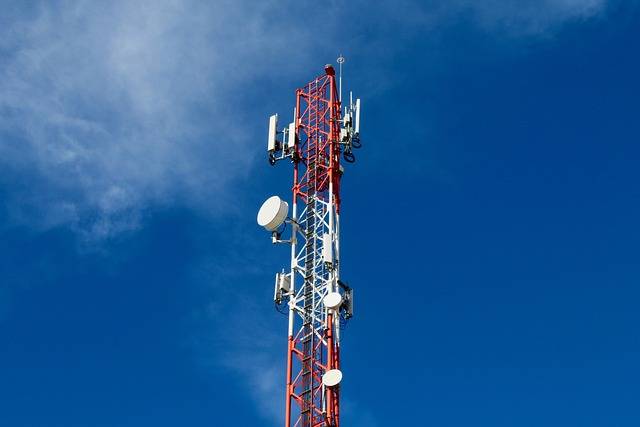Avoid These Costly Mistakes: My Experience with Ridiculously High International Roaming Charges
Share
| Table of Contents | |
|---|---|
| 1. Understanding International Roaming Charges | |
| 2. Common Mistakes That Lead to High Roaming Charges | |
| 3. Tips for Avoiding High Roaming Charges While Traveling | |
| 4. How to Check and Monitor Your Mobile Usage While Abroad | |
| 5. How to Negotiate and Dispute High Roaming Charges | |
As a frequent traveler, I have learned the hard way about the high cost of international roaming charges. On one particular overseas holiday, I ran up a ridiculously high mobile bill due to my own careless mistakes. In this article, I will share my experience and offer tips on how to avoid making the same costly mistakes.

Understanding International Roaming Charges
Firstly, it is important to understand what international roaming charges are and how they work. When you travel overseas and use your mobile phone, you are essentially connecting to a foreign network. This means that you are using a different carrier's infrastructure to make calls, send texts, and use data.
International roaming charges refer to the fees that mobile phone users incur when they use their devices outside their home country. These charges are applicable when users make or receive calls, send text messages, or use data services while traveling abroad.
The cost of international roaming charges can vary significantly depending on the mobile service provider and the country being visited. The charges are typically higher than the regular rates for domestic usage due to the additional costs involved in connecting to foreign networks.
To understand international roaming charges, it's important to consider the different components that contribute to the overall cost:
- Outgoing Calls: When making calls while roaming, users are billed for both the incoming and outgoing calls. This means that not only are you charged for dialing out, but you may also be charged for receiving calls.
For example, if you are traveling to France and make a call to a local number, you will be charged for making the call, and if someone calls you on your roaming number, you will be charged for receiving the call as well.
- Incoming Calls: As mentioned earlier, receiving calls while roaming can also incur charges. The cost may vary depending on whether the call is from another country or from your home country.
For instance, if you have a US-based mobile plan and receive a call from a US number while in France, you may still be charged international roaming fees. However, if you receive a call from a local French number, the charges may be different.
- Outgoing Text Messages: Similar to calls, sending text messages while roaming can also result in additional charges. Each outgoing text message is usually billed separately, and the cost can vary depending on the destination country.
For example, if you send a text message to a friend while traveling in Japan, you may be charged a higher rate compared to sending a text message domestically.
- Data Usage: One of the most significant contributors to international roaming charges is data usage. Whether you're browsing the internet, using social media, or downloading files, using mobile data while roaming can quickly accumulate costs.
It's important to be aware of how data is consumed while abroad to avoid unexpected charges. This can be done by turning off automatic app updates, limiting video streaming, and using Wi-Fi whenever available.

To mitigate international roaming charges, there are a few strategies to consider:
Purchase an International Roaming Plan: Many mobile service providers offer international roaming plans that provide discounted rates for calls, texts, and data usage. These plans are often available for specific countries or regions and can help reduce costs significantly.
Use Local SIM Cards: Another option is to purchase a local SIM card in the country you are visiting. By using a local SIM card, you can take advantage of local rates and avoid the higher charges associated with international roaming.
Utilize Wi-Fi: Whenever possible, connect to Wi-Fi networks to access the internet and make calls using messaging apps. This can help minimize data usage and avoid international roaming charges altogether.
In conclusion, understanding international roaming charges involves considering the various components that contribute to the overall cost. By being aware of these charges and implementing strategies to mitigate them, mobile phone users can effectively manage their expenses while traveling abroad.
Common Mistakes That Lead to High Roaming Charges
One of the most common mistakes that people make is not checking their mobile plan before traveling overseas. Many plans do not include international roaming, and if you use your phone without a plan, you will be charged at a much higher rate. This can lead to a shockingly high bill when you return home.
Another mistake is not turning off data roaming. When data roaming is on, your phone will automatically connect to the internet when you are not connected to Wi-Fi. This can result in charges for every megabyte of data used, which can quickly add up.
Using your phone for streaming or downloading large files can also lead to high roaming charges. The data usage for these activities is much higher than for browsing the internet or sending emails.
My Personal Mistakes and Lessons Learned
On my overseas holiday, I made several mistakes that led to a ridiculously high mobile bill. Firstly, I did not check my mobile plan before leaving home. I assumed that I had international roaming included, but it turned out that I did not.
Secondly, I did not turn off data roaming. I was using my phone to navigate and check social media, unaware that I was racking up charges for every megabyte of data.
Lastly, I used my phone to stream music while on the beach. I had no idea that this would result in such high charges, and I only realized my mistake when I received my mobile bill.
From this experience, I have learned the importance of checking my mobile plan before traveling overseas, turning off data roaming, and avoiding streaming or downloading large files.
Tips for Avoiding High Roaming Charges While Traveling
One of the best ways to avoid high roaming charges is to purchase an international roaming plan from your home carrier. This plan will typically offer a set amount of data, calls, and texts for a fixed fee. It is important to check the terms and conditions of the plan to ensure that it covers the countries you will be visiting.
Another option is to purchase a local SIM card when you arrive at your destination. This will give you a local phone number and data plan, which can be much cheaper than using international roaming. However, this option may not be feasible if you are only traveling for a short period.
An even smarter option is to buy an eSIM online and install it on your phone even before you begin your journey. This is probably the smartest and most cost effective way to stay mobile in foreign countries. Many sites and APPs offer incredible deals on eSIM Plans for travel. One of the most trusted amongst them is ROCKET. Rocket eSIMs are available for over 150 countries and they are backed by top notch support and state of the art technology
Turning off data roaming and only using Wi-Fi is another effective way to avoid high roaming charges. Most hotels, cafes, and restaurants offer free Wi-Fi, so you can still stay connected without incurring charges.

Alternatives to International Roaming
If you are traveling for an extended period or need to stay connected for work, there are alternatives to international roaming. One option is to use a mobile hotspot device, which allows you to connect multiple devices to the internet using a local SIM card. This can be a cost-effective way to stay connected while overseas.
Another option is to use a VoIP service, such as Skype or WhatsApp, to make calls and send messages. These services only require an internet connection, so you can use them without incurring roaming charges.
How to Check and Monitor Your Mobile Usage While Abroad
When traveling abroad, it is important to keep track of your mobile usage to avoid unexpected bills and minimize roaming charges. Here are some steps to check and monitor your mobile usage while abroad:
Contact your mobile service provider: Before leaving for your trip, get in touch with your mobile service provider to understand their international roaming policies and charges. Some providers offer specific international plans or add-ons that can help you control your mobile expenses while traveling.
Set up data usage alerts: Most mobile service providers allow you to set up data usage alerts. These alerts can help you keep track of your data usage and notify you when you are nearing your limit. By setting up alerts, you can avoid any unexpected charges and make necessary adjustments to your mobile usage.
Monitor your data usage: While abroad, regularly check your data usage to ensure you stay within your plan's limits. This can usually be done through your mobile service provider's app or website, where you can view your current usage and remaining balance. By keeping an eye on your data usage, you can make informed decisions about when to connect to Wi-Fi or limit your usage to avoid additional charges.
Use Wi-Fi whenever possible: Whenever you have access to a Wi-Fi network, connect your mobile device to it. This will help you avoid using your mobile data and minimize the risk of incurring extra charges. Be cautious when connecting to public Wi-Fi networks, as they may not always be secure. Use a reliable Virtual Private Network (VPN) to ensure your data remains protected.
Download offline maps and content: Before traveling, download offline maps and any other content you might need during your trip. This can help you navigate and access important information without relying on data or Wi-Fi connections. Apps like Google Maps allow you to download maps for offline use, providing you with directions even when you don't have an internet connection.
Example: Suppose you are traveling to Europe and have a specific international plan with your mobile service provider. You have a data limit of 2GB per month. To stay within your limit, you set up data usage alerts to receive notifications when you reach 80% and 100% of your data usage.
During your trip, you regularly check your data usage through your provider's app. By monitoring your usage, you notice that you reach 80% of your data limit halfway through your trip. This prompts you to be more mindful of your data consumption and prioritize connecting to Wi-Fi whenever possible. As a result, you manage to stay within your data limit and avoid any additional charges.
By following these steps and being proactive in monitoring your mobile usage while abroad, you can ensure a smoother and more cost-effective experience during your travels.

How to Negotiate and Dispute High Roaming Charges
If you do receive a high mobile bill due to international roaming charges, there are steps you can take to dispute or negotiate the charges. Firstly, contact your home carrier and explain the situation. They may be able to offer a payment plan or reduce the charges if there was an error.
If you are unable to resolve the issue with your home carrier, you can contact the Telecommunications Industry Ombudsman (TIO) in your country. The TIO is an independent organization that handles disputes between consumers and telecommunications providers.
Avoiding Costly Mistakes While Traveling
In conclusion, international roaming charges can be a costly mistake for travelers. However, with some preparation and awareness, it is possible to avoid these charges and stay connected while traveling overseas.
Remember to check your mobile plan before leaving home, turn off data roaming, and avoid streaming or downloading large files. Consider purchasing an international roaming plan, a local SIM card, or using Wi-Fi to stay connected. Of course, nothing can beat an eSIM here. Travel eSIMs from Rocket are reasonably priced, easy to use and offer fantastic data connectivity no matter where you travel to.
Rocket eSIMs are available by Country, Region OR even for Global travel. So, you can buy an eSIM for USA, or an eSIM for Europe OR a global eSIM from the Rocket website or APP. In just a few minutes and by spending just a few dollars, you can enjoy incredible data connectivity without the hassle of buying a plastic SIM Card and installing it manually. eSIMs are digital products that can be installed in a couple of minutes using a QR Code mechanism OR directly via the Rocket APP. This is the new deal, and its getting extremely popular with travelers worldwide.
By following these tips and avoiding the mistakes I made, you can enjoy your overseas holiday without the stress of a ridiculously high mobile bill!
Frequently Asked Questions

Related Blogs
 Global telecom players for data connectivity
Global telecom players for data connectivity The Pros and Cons of Buying an International Roaming Plan for Data
The Pros and Cons of Buying an International Roaming Plan for Data Travel Smart with these Top Cellular Companies' International Roaming Plans for Global Data
Travel Smart with these Top Cellular Companies' International Roaming Plans for Global Data Data Roaming on Your Overseas Holiday: To Keep On or Turn Off?
Data Roaming on Your Overseas Holiday: To Keep On or Turn Off? Avoid These Costly Mistakes: My Experience with Ridiculously High International Roaming Charges
Avoid These Costly Mistakes: My Experience with Ridiculously High International Roaming Charges Understanding Data Roaming : A Guide to Staying Connected on Your International Trips
Understanding Data Roaming : A Guide to Staying Connected on Your International Trips
-300x600-px.gif)

